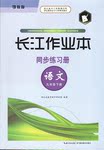题目内容
Bicycles are a great way to get around. They’re fun to ride, especially down hills. And, as you speed along the road, you might also think of ways in which you could improve your bike— make it safer, more efficient, or more comfortable. In fact, the two-wheeled machines make for some cool science projects.
This year's Intel International Science and Engineering Fair (ISEF), held last May in Cleveland, featured(had)three bicycle projects from three countries. Like many of the other experiments presented at ISEF, the bike projects showed that some of the most interesting scientific research often begins by taking a closer look at things you care about.
Renato Angulo Chu had even grander ambitions. The 12th-grader from Lima, Peru, wanted to address some of his country's economic troubles.
"I see a problem in my country," Renato said. "If you go to the forests in Peru, in some places you cannot find electricity. If you go with my bicycle, you can turn on the lights."
Renato, 16, spent 3 years designing his special Multibike. The device looks like a fixed exercise bike. It has wires fixed along the frame and a blender strapped (fastened) to the back. Turning the pedals operates the blender. The same principle can be used to sharpen knives or sweep city streets.
The Multibike can work either as a fixed bike or as a bicycle able to travel city streets and country roads. It's made from inexpensive materials, and the user gets exercise while pedaling to operate a machine.
"You pedal the bike, and you can mix any drink you want," Renato said. More importantly, he added, the same concept could be used to bring light to houses in remote regions of the rainforest.
1.What can we learn from the first paragraph?
|
A.Bikes should be made more comfortable to ride. |
|
B.You can improve your bicycle for science research. |
|
C.Many inventions are connected with the bicycle. |
|
D.Bicycles are the best way to go about |
2.Which of the following is true according to the passage?
|
A.ISEF is an exhibiton displaying bicycle experiments designed by students. |
|
B.Looking closely at things you are concerned about can lead to scientific research. |
|
C.Renato’s improvement of the bicycle has solved the country’s great problem. |
|
D.Renato’s special bicycle will soon be put into use in remote areas.’ |
3.The underlined word “address” in the third paragraph probably has the same meaning as _______.
|
A.make address written |
B.give up |
C.work at |
D.speak at |
4.Renato’s special Multibike has all the following EXCEPT ________.
|
A.making knives sharp |
B.mixing any kind of drinks |
|
C.producing electricity |
D.operating a machine with its own electricity |
5.It can be inferred that Renato’s special bicycle is mainly designed for ________.
|
A.distant areas in the rainforest without electricity. |
|
B.the use of his own family to make life easier. |
|
C.the competition of ISEF to win money to support remote rainforests |
|
D.enough exercise by pedaling it |
1.B
2.B
3.C
4.D
5.A
【解析】位置介绍了一位16岁得少年自己发明的一种新型自行车。
1.B 推理题。根据第一段后三行you might also think of ways in which you could improve your bike— make it safer, more efficient, or more comfortable. In fact, the two-wheeled machines make for some cool science projects.说明我们可以用各种科学的方法提高我们的自行车的用途。
2.B 推理题。根据第二段最后三行the bike projects showed that some of the most interesting scientific research often begins by taking a closer look at things you care about.用自行车的例子 说明更近的观察我们关心的事物会带来科学研究。
3.C 猜测词义题。The 12th-grader from Lima, Peru, wanted to address some of his country's economic troubles.根据横线后面提到的秘鲁的经济困难,那么他想为秘鲁的经济困难做出自己的贡献,为之努力。故C正确。
4.D 细节题。根据第五段最后一句The same principle can be used to sharpen knives or sweep city streets说明A是用途。最后一段第一行"You pedal the bike, and you can mix any drink you want说明B是用途。最后一句话the same concept could be used to bring light to houses in remote regions of the rainforest. 说明可以发电来照明,故C是用途。D没有提及。。D正确。
5.A 推断题。根据第四段第1,2行If you go to the forests in Peru, in some places you cannot find electricity和最后一句he added, the same concept could be used to bring light to houses in remote regions of the rainforest. 都说明这种自行车可以用于没有电的偏远的热带雨林地区。故A正确。

 长江作业本同步练习册系列答案
长江作业本同步练习册系列答案 小天才课时作业系列答案
小天才课时作业系列答案Things you need to know about studying there
Study style
Since the 1950s, the Netherlands has had courses in English especially for foreign students. Students are expected to be critical of what they read and hear, and to be able of working independently. Foreign students will soon notice that at Dutch institutions for higher learning people are expected to do a lot of talking. The most common form of teaching is the seminar or working group, where a small group of students work under a teacher’s supervision to analyze(分析)a certain problem. On exams, they have to show that they know the material, and that they have formed well-founded opinions on the subject.
Accommodations(住宿)
If you are in an exchange programme or an international course, it is quite possible that a room will be arranged for you. Accept it immediately, or you will regret it later. That’s because finding a place to live in a country as crowded as the Netherlands is not easy.
Before you leave China, ask your host institution whether or not housing will indeed be arranged in advance. If you are in the Netherlands and still looking for a place, ask the international relations office or the student dean for advice.
Expences
Tuition: (学费)
Bachelor’s degree:about 2,500 euros a year
Master’s degree: 5,000-12,000 euros a year
Living expenses:
Experience has shown that a year in the Netherlands costs a Chinese
Student about 450-700 euros a month.
Here is a breakdown of average prices of supermarket goods:
Litre of milk: 0.5—0.8 euro
Kilo of apples: 1.5 euros
Shampoo, 400ml: 4 euros
Tube of toothpaste: 1 euro
Bed sheet: 20 euros
Other expenses:
Haircut: 15 euros
Air ticket to China: 600-800 euros
Mobile phone call(one minute): 0.1-0.3 euro
Phone call to China (with IP card): 7 euros(one minute)
Postage stamp in the Netherlands: 0.39 euro
Stamp for China: 0.78 euro
(1 euro-about 10 yuan)
Transportation
Trains, buses and trams run throughout the country.
If you really want to sample Dutch life, and get around quickly and easily, buy yourself a bicycle. Most students buy second-hand bicycles. A reasonable one will cost you 70-120 euros.
You can find them at second-hand bicycle shops or at the bicycle parking facilities near railway stations.
1.Teachers want foreign students to do much talking and analyzing in order to make them .
|
A.get higher marks |
B.pass exams easier |
|
C.be able to work independently |
D.get in close touch with each other |
2.The passage implies that .
|
A.it is easier to find a room in Netherlands |
|
B.it is difficult to find a room in Netherlands |
|
C.your host institution will surely find a room for you |
|
D.the international relations office can find a room for you |
3.It costs at least a year for a Master degree.
|
A.104,000 yuan |
B.104,000 euros |
C.174,000 yuan |
D.134,000 euros |
4.Most students ride second-hand bicycles mainly because .
|
A.they can ride them fast and easily |
|
B.bicycles are safe and comfortable for riding |
|
C.bicycles are convenient and easy to park |
|
D.bicycles are convenient and cheap |
Bicycles are very popular in China. In our country you can see bicycles almost everywhere. When you walk on the road, you will find a lot of people riding bicycles to schools, shops and anywhere else. Therefore, China is known as “the kingdom of bicycles”. In China, many families have one or two bicycles.
Compared with cars, bicycles have many advantages. First, they are much cheaper than cars. Most Chinese can’t afford cars, but they can afford bicycles. Second, bicycles are small enough to park anywhere, while cars need a larger piece of land to park. What’s more, with lower speed, bicycles are safer than cars.
However, bicycles also bring some problems. Some riders don’t obey the traffic rules and some riders don’t think about others safety. So they ride too fast. During the rush hour, too many bicycles may cause traffic accidents. We still have a long way to solve the problem.
1. Where can you see bicycles in China?
|
A.In the big city |
B.In the town |
|
C.Almost everywhere |
D.In the countryside |
2.“The kingdom of bicycles” here is saying .
|
A.China has plenty of bicycles |
B.China makes bicycles |
|
C.Only China has bicycles |
D.All the Chinese have bicycles |
3. Which of the following is NOT an advantage of bicycles
|
A.Bicycles are much cheaper than cars. |
B.Bicycles are more beautiful than cars |
|
C.Bicycles are easy to park |
D.Bicycles are safer than cars. |
4. What does the last sentence mean?
|
A.We should drive cars instead of riding bicycles |
|
B.It’s too far to ride bicycles |
|
C.We still need to do much to solve the problem |
|
D.we should walk farther to solve the problem |